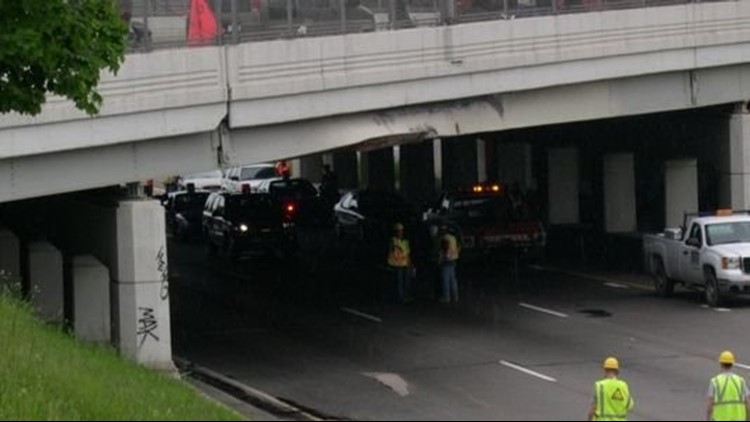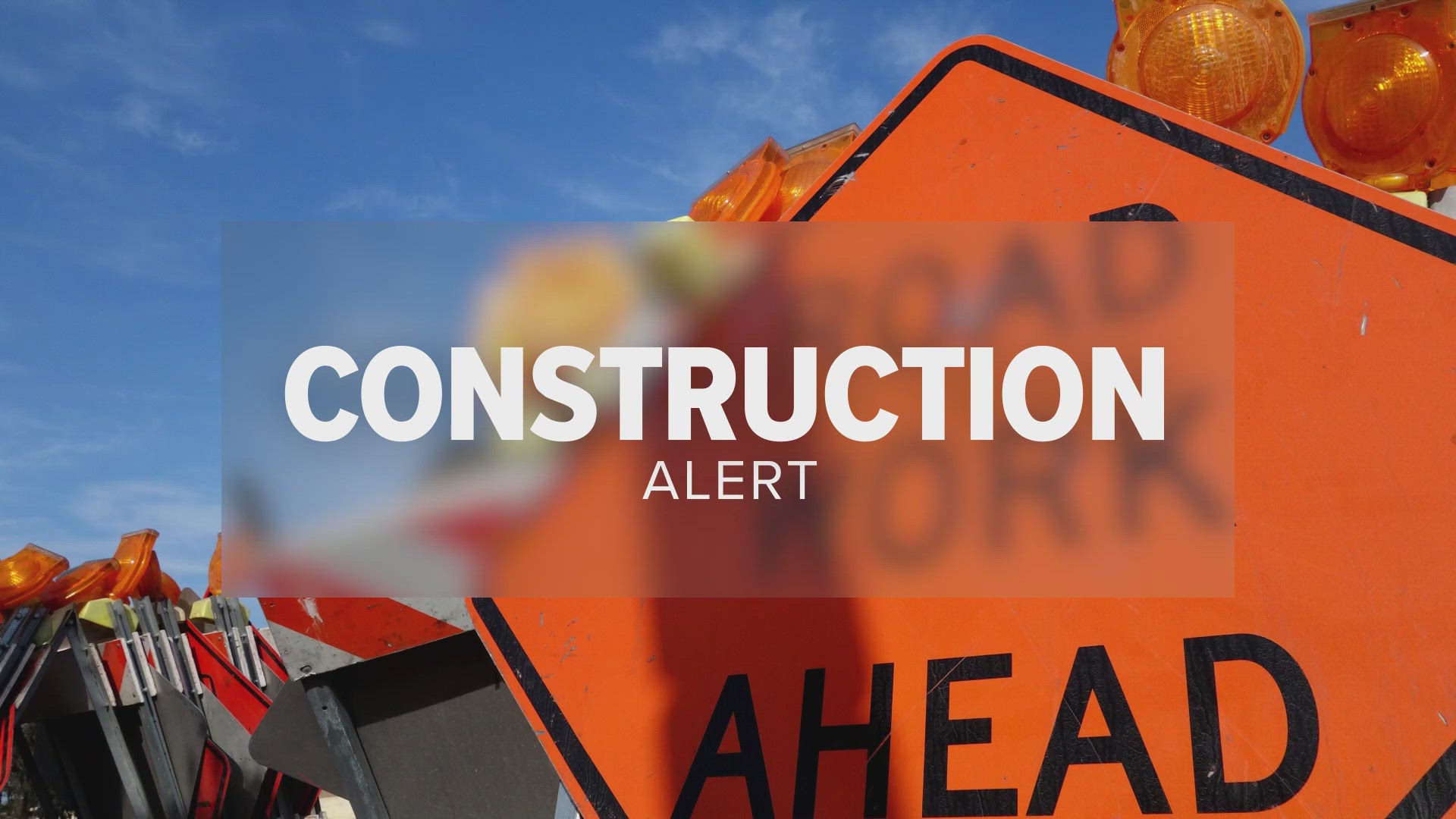Look up! More vehicles have been smashing into overpasses that were too low to limbo, causing millions of dollars in damage and impelling road and bridge closures across the state.
In Michigan, there were 15 "significant high load hits" in 2017 compared with seven in 2015 and in 2016, according to the Michigan Department of Transportation (MDOT).
“The bridges haven’t gotten any lower,” said Jeff Cranson, the agency's director of communications. “My personal theory for the uptick is lack of training and experience.”
Drivers responsible
It is the responsibility of truck drivers and carriers to know the height of the load they are hauling and to check the heights of bridges along their route, Cranson said.
In Michigan, truckers are required to obtain a permit when materials on the rig exceed a height of 13 feet, 6 inches. MDOT provides a custom route to permit holders that avoids potentially dangerous overpasses.
"Generally, the trucks that are hitting bridges are not carrying permitted loads," said Randy Coplin, assistant commander of the Michigan State Police Commercial Vehicle Enforcement Division. "These are driver responsibility errors occurring."
However, there are multiple factors relating to the statewide problem of bridge strikes, said James Burg, president and CEO of Warren-based James Burg Trucking Co. and a member of several organizations advocating for trucker safety.
Burg said acquiring a permit is excessively complex, as truckers are required to apply for a permit from the states, counties and sometimes municipalities through which they drive.
Permit system a mess
“Getting a permit is not a one-stop shop,” he said. “How are you supposed to know who to call?
“The process could be much easier, which would lead to higher compliance from truckers and a path to safer roadways.”
Properly securing a load can also help prevent bridge strikes, said Burg, whose trucking company boasts a 90-truck fleet.
“There are times when a truck has a boom and it will move up and down,” he said. “If it moves an inch, it stays there, and suddenly the truck height is changed.”
Burg, a member of Michigan State Police’s Motor Carrier Advisory Board, said he has had discussions with the department about incorporating technology on the road that will prevent strikes.
Are lasers the answer?
One idea being considered is placing laser sensors on roadways that will sound an alarm and flash red lights when a vehicle is approaching a bridge that is too low, alerting the at-risk driver to pull over to the shoulder.
Burg also suggested placing additional State Police-run inspection sites in strategic locations.
“We watch what other states are doing and how it is working for them,” he said.
Burg — who is chair of the Technology Committee of H.E.L.P. Inc. and former chairman of the Technology and Engineering Policy Committee of the American Trucking Association — added that although driverless trucks won’t be available for 20 to 25 years, driver-assist technology is being implemented in new trucks, increasing road safety and possibly preventing future bridge strikes.
“You hear a lot of people talking about driverless trucks, but we won’t be seeing those anytime soon — we can’t even properly fix potholes yet,” Burg said. “There are too many factors, such as weather and road conditions, that make it too difficult for (driverless technology) to be safe and effective at the moment.”
Moreover, inexperienced drivers and companies that don’t specialize in trucking but still haul large equipment — such as construction firms — are a cause for many high load hits, Burg added.
“Trucking companies asses risk everyday — that is the primary part of the job,” Burg said. “Firms specializing in trucking take precautions that other companies (on the road) might not.”
Subsequent to a bridge strike, the attorney's general office works with the at-fault company’s insurance agency to determine damage costs. At-fault drivers are often issued a citation that runs a few hundred dollars, Burg said.
“It’s a laborious legal process,” said Cranson.
Safety issues
MDOT initiates an “intensive inspection” ensuring the integrity of a bridge after it has been hit, Cranson said.
“There are times when a bridge needs to be demolished after being struck,” he added.
The 100th Street Bridge in Byron, Mich., has been hit over 10 times in the past two years.
MDOT is shaving a few inches from the road under the bridge this fall as a temporary solution and will be replacing the bridge in the next couple years, Cranson said.
“This week is National Truck Driver Appreciation Week,” Burg said. It’s an industry that employs more than 7 million Americans and is the reason grocery stores across the nation are stocked and people are able to get their stuff from Amazon delivered to their front door.
“It’s so important that we keep everyone in service and on the roadways safe.”
Some notable high load hits from 2018 include:
- A tractor-trailer that crashed into the Nevada Avenue overpass on I-75, according to MDOT.
- A tractor-trailer that tipped under an overpass on I-94 near Warren Avenue in Detroit.
- In Canton, a tractor-trailer traveling on I-275 smashed into the Cherry Hill Road overpass.
Contact Omar Abdel-Baqui: 313-222-2514 or oabdel-baqui@freepress.com. Follow him on Twitter @omarabdelb
►Make it easy to keep up to date with more stories like this. Download the WZZM 13 app now.
Have a news tip? Email news@wzzm13.com, visit our Facebook page or Twitter.



